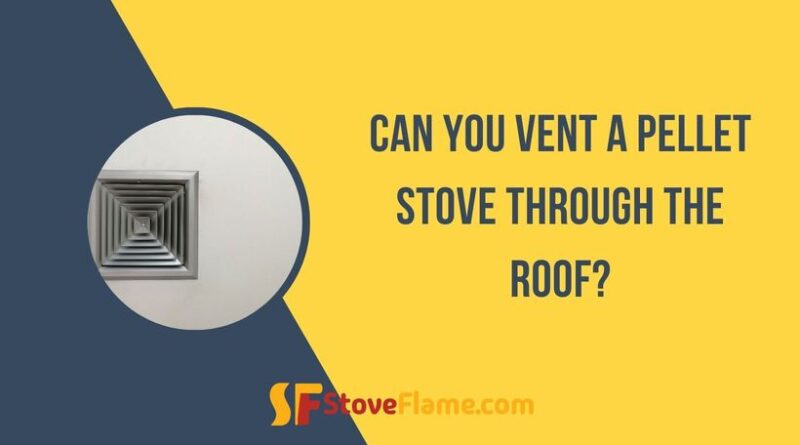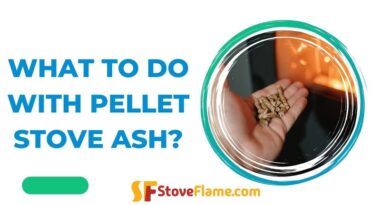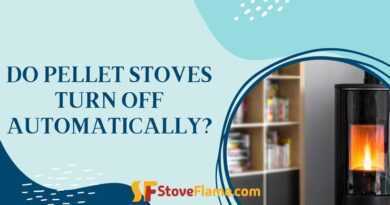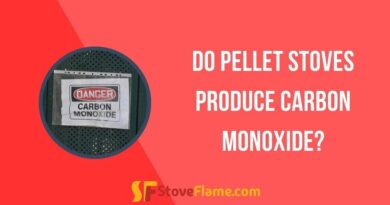Can You Vent A Pellet Stove Through The Roof?
Pellet stoves have become a popular alternative to traditional wood or gas stoves due to their efficiency and clean burning capabilities. However, for those considering installing a pellet stove, one important factor to consider is the ventilation system. While some may assume that venting a pellet stove through the roof is a straightforward process, there are certain considerations and precautions that must be taken into account.
This article examines the practicality and potential challenges associated with venting a pellet stove through the roof, and outlines the essential steps for a safe and efficient installation. From understanding the various types of pellet stove venting systems to assessing the structural soundness of your roof, we offer a comprehensive guide to help you determine the suitability of this method for your residence. Whether you are contemplating an investment in a pellet stove or are an existing owner seeking modifications, this guide will provide key insights on the critical considerations when venting a pellet stove through the roof.
The Basics of Venting a Pellet Stove
One important aspect of installing and operating a pellet stove is proper venting. Venting allows the combustion gases produced by the stove to safely exit your home, preventing the build-up of harmful pollutants. There are different venting options available, including through the wall and through the ceiling. When considering venting options, it’s crucial to follow the manufacturer’s guidelines and local building codes.
Additionally, it’s recommended to consult with a professional to ensure the venting system is installed correctly and meets all safety requirements. Proper venting not only ensures the efficient operation of your pellet stove but also promotes indoor air quality and the overall safety of your home.
Types of Venting Options for Pellet Stoves
Pellet stoves offer various venting options to accommodate different home setups and personal preferences. One common venting option is through an exterior wall. This method involves installing a horizontal vent pipe that extends through the wall and connects to an outside termination point. This option is often preferred for homes without existing chimneys or for those who prefer a more streamlined and direct venting route.
Another option is through the ceiling, where a vertical vent pipe is installed to extend through the roof and terminate above it. This method is suitable for homes with existing chimneys or for those who want to utilize an existing venting system.
Additionally, some pellet stoves offer the flexibility of rear venting, where the vent pipe is installed through the back wall of the stove and connects to an exterior termination point.
Can You Vent A Pellet Stove Through The Roof?
When it comes to venting a pellet stove, one option to consider is venting through the roof. This method can be a suitable choice for those who have an existing chimney or prefer a vertical venting route. However, it’s important to note that venting a pellet stove through the roof requires careful planning and adherence to safety guidelines.
Consulting with a professional or the manufacturer of your pellet stove is highly recommended to ensure proper installation and to avoid any potential hazards. They can provide valuable guidance on the specific requirements, materials, and considerations involved in venting a pellet stove through the roof.
Factors to Consider Before Venting Through the Roof
Before deciding to vent your pellet stove through the roof, there are several important factors to consider. Firstly, you need to assess the structural integrity of your roof. Venting requires cutting a hole in the roof, so it’s crucial to ensure that it can support the weight of the venting system and withstand any potential leaks.
Additionally, you should take into account the slope and material of your roof, as different materials may require specific installation techniques. Another factor to consider is the distance between the stove and the roofline, as longer venting routes can impact efficiency and may require additional equipment.
Lastly, it’s essential to comply with local building codes and regulations regarding venting systems to ensure safety and compliance. By carefully considering these factors and consulting with professionals, you can make an informed decision about venting your pellet stove through the roof that is both effective and safe for your home.
Steps to Venting a Pellet Stove through the Roof
To successfully vent a pellet stove through the roof, follow these steps. Firstly, gather all the necessary tools and equipment, such as a ladder, measuring tape, saw, vent pipe, and roof flashing.
Next, locate the ideal spot on the roof for the vent, taking into consideration the stove’s location and the structural integrity of the roof. Measure and mark the area for the vent hole. Using a saw, carefully cut the hole, ensuring it is slightly larger than the diameter of the vent pipe. Install the roof flashing around the hole to prevent any water leaks. Connect the vent pipe to the stove and feed it through the hole in the roof. Secure the vent pipe in place using brackets or screws.
Finally, seal any gaps or joints in the vent pipe to prevent air leaks. It is important to note that these steps serve as a general guide, and it is recommended to consult a professional or refer to the manufacturer’s instructions for specific requirements and guidelines.
Common Mistakes to Avoid
When venting a pellet stove through the roof, there are certain common mistakes that you should avoid to ensure a safe and efficient installation. First and foremost, one of the most common mistakes is not properly planning the venting route. It’s crucial to carefully consider the structure of your roof and identify any potential obstacles or obstructions.
Another mistake to avoid is using the wrong size or type of vent pipe. Make sure to select a vent pipe that is compatible with your pellet stove and meets the necessary safety standards.
Additionally, neglecting to properly seal the vent pipe connections can lead to air leaks and reduce the stove’s efficiency. Take the time to seal all joints and connections thoroughly to prevent any potential issues down the line.
Lastly, ignoring local building codes and regulations is a mistake that can result in safety hazards and legal consequences. Always ensure that you are in compliance with the relevant regulations before proceeding with the installation. By avoiding these common mistakes, you can ensure a successful and hassle-free venting of your pellet stove through the roof.
Other Venting Options
When it comes to venting options for your pellet stove, there are alternatives to venting through the roof that you can consider. One option is venting through an exterior wall. This can be a convenient choice if your pellet stove is located near an exterior wall and if there are no obstacles or obstructions in the way.
Another option is venting through an existing chimney. If you have a masonry chimney that is no longer in use, it can be repurposed for venting your pellet stove. However, it is important to ensure that the chimney is in good condition and properly lined for safe operation.
Additionally, some pellet stoves offer direct venting options, which allow you to vent the stove horizontally through an exterior wall. This can be a great solution if you prefer to avoid roof venting altogether.
Final Thoughts on Venting a Pellet Stove through the Roof
In conclusion, while venting a pellet stove through the roof is a common and effective method, it is not the only option available. Venting through an exterior wall or utilizing an existing chimney are viable alternatives that can suit your specific situation.
Additionally, some pellet stoves offer direct venting options for those who want to avoid roof venting altogether. Remember, safety should always be the top priority when it comes to venting your pellet stove, so consulting with a professional and adhering to local building codes and regulations is essential. By considering all the available options and making an informed decision, you can ensure a safe and efficient venting installation for your pellet stove.
I'm Daniel Miller, the proud owner of StoveFlame. With over five years of experience in this dynamic field, I've honed my skills and passion for delivering top-notch quality and accuracy in everything I do.





